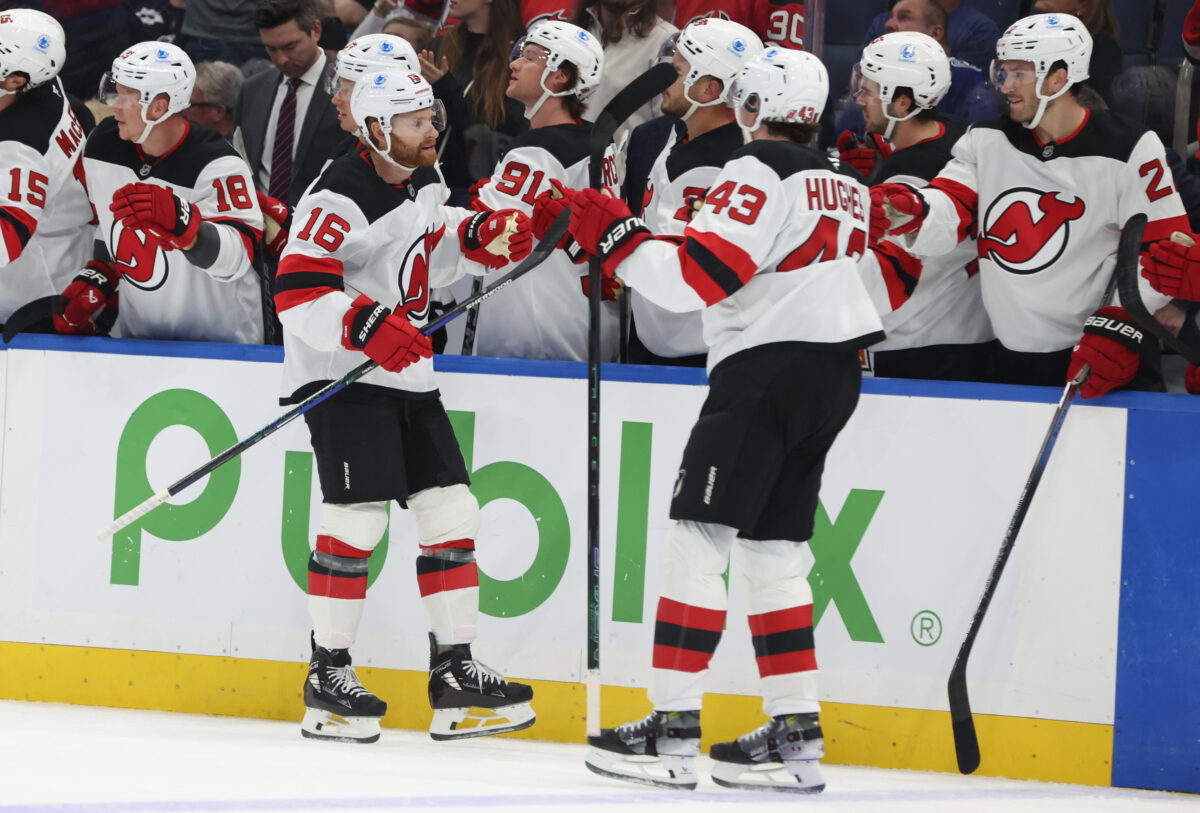The New Jersey Devils have played just five games so far, but they’ve already achieved a four-game win streak—something that has evaded them since the beginning of 2023. Boasting a 4-1-0 record, the team is showcasing a united front, with each player putting forth top-notch effort. But what has been the key to their success so far?
A significant part of their recent strength stems from their penalty kill, which has minimized opposing scoring chances and kept the odds firmly in the Devils’ favor. Let’s take a deep dive into what makes the team excel shorthanded, as well as how they can build on this early momentum.
Top-Notch Penalty Kill Kicks Off 2025-26
Last season, the Devils were an elite force on the penalty kill. They ranked second in the league, with an 82.7% success rate. And after a handful of games this season, it’s clear their dominance could continue.
Their power play might be facing some inconsistencies early on, but the Devils’ penalty kill has been first-rate. Admittedly, five games is a small sample size, and a lot could change as the season progresses, but their early success is promising. They have allowed just one goal against while shorthanded, and their 95% kill rate is the third-best in the league. So far, their penalty kill has allowed them to maintain a lead over tough opponents, including the Tampa Bay Lightning and the Edmonton Oilers.
Related: 3 Takeaways from the Devils’ 5-3 Victory Over the Oilers
It’s also gotten the Devils out of quite a few tough situations. The reigning Stanley Cup champions proved to be a challenging matchup on Thursday night, but the penalty kill set the bar high. After giving up an early goal at even strength, the Devils doubled down and executed a flawless kill, stopping all five of the Florida Panthers’ power plays. The Devils limited them to four shots on goal on the man advantage, along with just one high-danger scoring chance.
Key Players Making an Impact
So far this season, Brenden Dillon has recorded the highest penalty kill ice time (21:21), registering 4:16 per game. As expected, he has stepped up in the absence of Johnathan Kovacevic, who played a large role shorthanded before being sidelined with a knee injury.
Likewise, Nico Hischier’s 200-foot game remains a crucial weapon in terms of blocking shots, winning faceoffs, or shutting down an opposing team’s top line. Last season, he led Devils forwards in shorthanded ice time per game (2:03), but some of the pressure has been lifted off his shoulders with the arrival of Connor Brown.

Brown led all Oilers forwards in shorthanded minutes throughout the 2025 Stanley Cup Playoffs—and the trend has continued this season. His defensive skills have taken New Jersey’s penalty kill to the next level. Brown’s veteran experience and versatility are also a large part of why he averages 2:58 shorthanded ice time per game and has been on the ice for just 13 shots against.
But another factor in their penalty kill dominance comes from the new assistant coach, Brad Shaw, who is having an immediate impact. His expertise has paved the way for cohesive shorthanded units, with each player receiving specific roles and responsibilities. Following their 3-1 home opener win, goaltender Jake Allen sang Shaw’s praises, explaining how his system has already improved the team. “The penalty kill is all about predictability, buying in, and sacrifice. It’s not always going to go your way, but the guys are doing a great job,” said Allen.
Devils’ Penalty Kill Moving Forward
As the season continues, the Devils must sustain their early penalty-kill momentum. If they can maintain a strong net-front presence, it not only stifles the opposing team, but also relieves some of the pressure placed on the goalie. This is relevant now more than ever, since starting goaltender Jacob Markstrom will miss a few weeks after sustaining a lower-body injury three games into the season.
Imagine if you had Connor Brown on your team. Oh wait, you did. pic.twitter.com/O8hXekocwA
— New Jersey Devils (@NJDevils) October 18, 2025
For example, the Devils set the tone early on against the Oilers on Saturday afternoon. Following a high-sticking penalty in the first period, they kept Edmonton to zero shots on goal. Their penalty-kill prowess stopped the Oilers from gaining an advantage, and they went three-for-three on the kill. But Brown stole the show with a textbook breakaway, scoring a shorthanded goal against his former team.
Overall, the Devils are playing smart, even-keeled hockey when down a man, showcasing poise and defensive responsibility. If their penalty kill continues to be aggressive and dynamic, there’s no telling how far the team can go this season.
The Devils will return to action with back-to-back games on Tuesday and Wednesday, facing the Toronto Maple Leafs on the road before battling at home against the Minnesota Wild.
